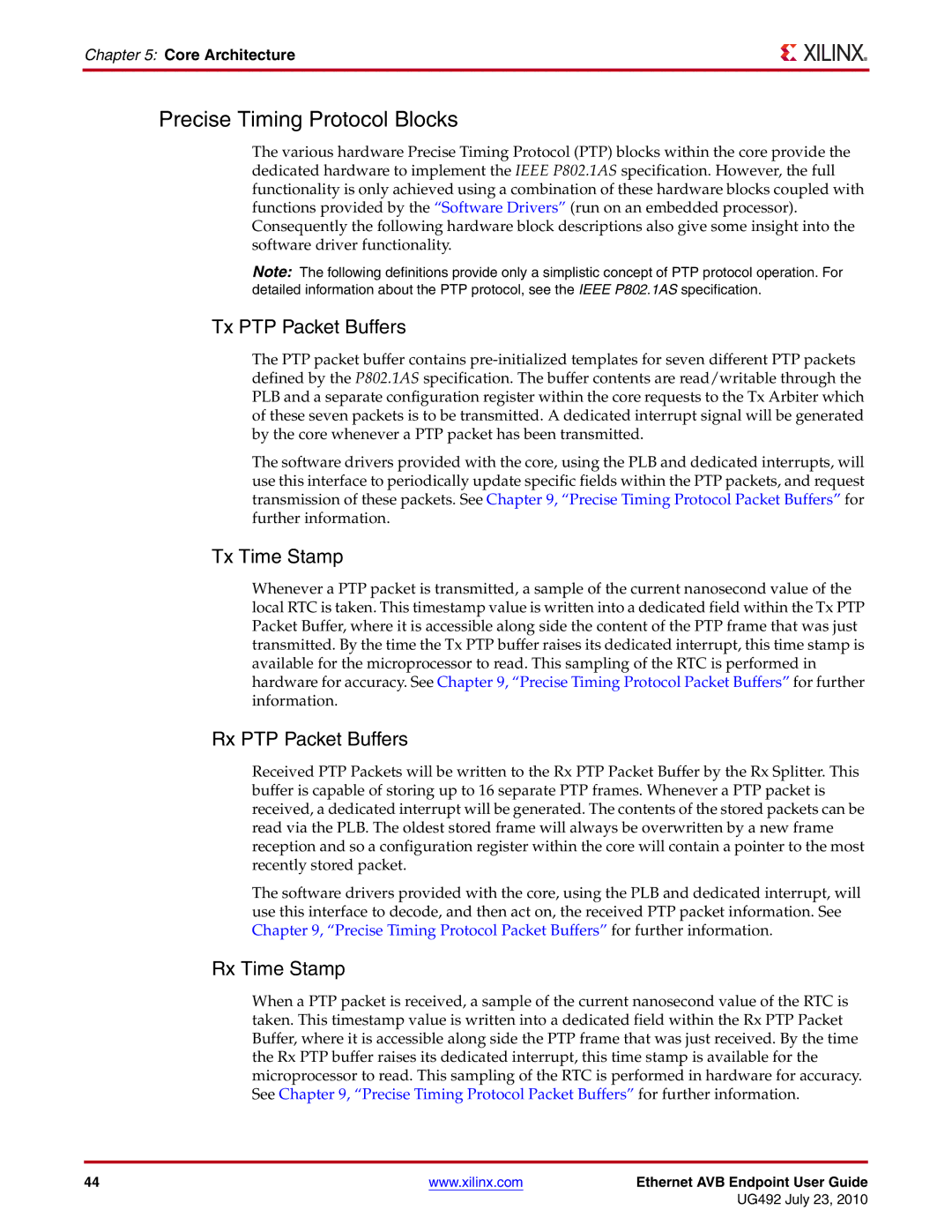
Chapter 5: Core Architecture
Precise Timing Protocol Blocks
The various hardware Precise Timing Protocol (PTP) blocks within the core provide the dedicated hardware to implement the IEEE P802.1AS specification. However, the full functionality is only achieved using a combination of these hardware blocks coupled with functions provided by the “Software Drivers” (run on an embedded processor). Consequently the following hardware block descriptions also give some insight into the software driver functionality.
Note: The following definitions provide only a simplistic concept of PTP protocol operation. For detailed information about the PTP protocol, see the IEEE P802.1AS specification.
Tx PTP Packet Buffers
The PTP packet buffer contains
The software drivers provided with the core, using the PLB and dedicated interrupts, will use this interface to periodically update specific fields within the PTP packets, and request transmission of these packets. See Chapter 9, “Precise Timing Protocol Packet Buffers” for further information.
Tx Time Stamp
Whenever a PTP packet is transmitted, a sample of the current nanosecond value of the local RTC is taken. This timestamp value is written into a dedicated field within the Tx PTP Packet Buffer, where it is accessible along side the content of the PTP frame that was just transmitted. By the time the Tx PTP buffer raises its dedicated interrupt, this time stamp is available for the microprocessor to read. This sampling of the RTC is performed in hardware for accuracy. See Chapter 9, “Precise Timing Protocol Packet Buffers” for further information.
Rx PTP Packet Buffers
Received PTP Packets will be written to the Rx PTP Packet Buffer by the Rx Splitter. This buffer is capable of storing up to 16 separate PTP frames. Whenever a PTP packet is received, a dedicated interrupt will be generated. The contents of the stored packets can be read via the PLB. The oldest stored frame will always be overwritten by a new frame reception and so a configuration register within the core will contain a pointer to the most recently stored packet.
The software drivers provided with the core, using the PLB and dedicated interrupt, will use this interface to decode, and then act on, the received PTP packet information. See Chapter 9, “Precise Timing Protocol Packet Buffers” for further information.
Rx Time Stamp
When a PTP packet is received, a sample of the current nanosecond value of the RTC is taken. This timestamp value is written into a dedicated field within the Rx PTP Packet Buffer, where it is accessible along side the PTP frame that was just received. By the time the Rx PTP buffer raises its dedicated interrupt, this time stamp is available for the microprocessor to read. This sampling of the RTC is performed in hardware for accuracy. See Chapter 9, “Precise Timing Protocol Packet Buffers” for further information.
44 | www.xilinx.com | Ethernet AVB Endpoint User Guide |
|
| UG492 July 23, 2010 |
